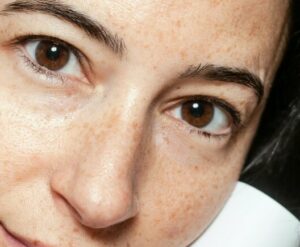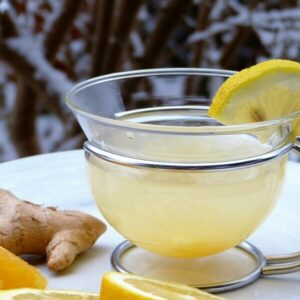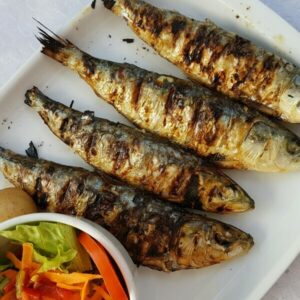We all watch the years go by, and with them, our skin often tells the tale of time. Wrinkles, fine lines, and a loss of elasticity can creep up on us. But what if I told you there’s a world where these natural signs of ageing could be slowed down, or even reversed, without harsh chemicals or invasive procedures? It is indeed possible, and I’m on this journey right now.
Skin ageing is a complex process influenced by numerous factors – genetics play their role, but our daily habits and environmental exposures are equally important. It’s not just what we put on our skin, but what we feed it from the inside that counts. This balance in our diet and lifestyle can leave a profound impact on our skin’s health, responsiveness, and overall appearance.
I recently had an enlightening conversation with my naturopath, who pointed out a seemingly harmless habit that could actually be accelerating my skin’s ageing process. Adding too much salt to foods, including homemade soups and curries, can set off an unhealthy electrolyte imbalance. Obscure as it might sound, this insight was a wake-up call.
Grounded in personal experience, I’ve come to realize that adapting my habits and diet can lead to visible changes in the health and youthfulness of my skin. The tweaks I’ve made are based on a deeper understanding of skin biology and tailored advice from trusted health professionals. And the first change? Cutting back on salt to better the delicate balance of sodium and potassium levels in my body.
The Sodium-Potassium Balance and Its Impact on Skin
Balancing our body’s electrolytes isn’t just a matter of health; it directly influences the appearance of our skin. Potassium and sodium, two key players, maintain cellular function and fluid balance. When sodium overshadows potassium, this can lead to dehydration, dry skin, and alas, those unwanted wrinkles.
While living life, I used to sprinkle salt on most meals without a second thought. It took a naturopath pointing out my casual seasoning could be strip-mining my complexion’s youthfulness for me to take notice. Salt was subtly carving canyons into my face, betraying my age or perhaps adding a few years.
Taking this advice to heart, I began turning away from my salt-laden favorites. That lentil curry and rice from two nights ago? Discarded. It was tough, but it symbolized my commitment to change. I decided it was time to remodel my diet and therefore, my skin.
This change set the stage for my next step: embracing an anti-inflammatory diet. If I could soothe the internal fires, would my skin reflect the calmness too? I was determined to find out and become a living testament to these changes.
Switching to an Anti-inflammatory Diet for Youthful Skin
You might not see it right away, but what you eat can show up on your skin. Inflammation is a well-known culprit when it comes to skin ageing. This internal fire can accelerate wrinkle formation and decrease the skin’s natural glow. That’s why an anti-inflammatory diet is your ally for maintaining youthful skin.
An anti-inflammatory diet focuses on foods that reduce the body’s inflammatory response. These foods are usually rich in antioxidants, omega-3 fatty acids, and other nutrients that support skin health. For me, embracing this way of eating meant saying goodbye to some old favorites and welcoming a range of vibrant, nutrient-packed foods.
I took a hard look at my regular diet, recognizing that the rich lentil curry and rice I adored were high in salt and other inflammatory ingredients. Following my naturopath’s advice, I started fresh. Out went the curry and rice, replaced by colorful, anti-inflammatory alternatives. I’ve since learned that each meal is an opportunity to nourish my skin from the inside out.
The transition hasn’t been just about avoiding certain foods; it’s involved a hearty embrace of vegetables, fruits, lean proteins, and whole grains. Each ingredient is chosen for its potential to reduce inflammation and, by extension, help mitigate skin ageing.
Hydration and Skin Health: Learning from a Personal Experience
Hydration is CRUCIAL for skin that looks and feels youthful. Skin cells, like any other cells in the body, require water to function properly. Dehydration can lead to a sallow, more aged appearance, and unfortunately, I learned this the hard way. During a rushed trip to Liverpool for an imperative appointment, I had just a single drink of juice which wasn’t enough to sustain hydration for the long hours of travel.
While returning, despite increasing my juice intake, a glance in the mirror revealed additional wrinkles on my forehead. This was an eye-opener, showing me the immediate effects of inadequate hydration. Skin, it appears, doesn’t hide neglect. It was a lesson I took to heart, prompting me to make hydration a central part of my skin care routine.
The next morning, I decided to take action. I blended an elaborate avocado smoothie containing hydrating ingredients and skin-nourishing fats. With flax seeds, avocado, beetroot, carrot, celery, cucumber, half a ripe plantain, 2 green apples, and a dash of kale, this concoction was not only a step towards better hydration but also a powerhouse of vitamins and minerals.
As I sipped on the smoothie throughout the morning, my body, as if in gratitude, began to show signs of revitalization. My skin started feeling more supple, a stark contrast to its previous parched condition. This smoothie was clearly more than just a refreshing drink; it was a potent reminder of how what we consume can have a direct and noticeable impact on our skin’s health.
What followed for lunch tied back directly to the underlying principle of replenishing and nurturing the body for skin health. Opting for a Sardine Pate, rich in omega-3 fatty acids, served with a salad teeming with fresh vegetables, was another step towards healing my skin from the inside out. Consuming foods high in water content and essential nutrients supports the hydration that our skin so desperately needs.
The Synergy of Whole Foods in Combating Skin Ageing
Navigating the aisles at Sainsbury’s became an integral component of my quest for age-defying skin. After experimenting with various diets, I’ve discovered that whole foods play a starring role in the natural rejuvenation of skin. It’s not just about one miracle ingredient; it’s the combined effect of nutrient-rich foods that support skin health.
A diet teeming with whole foods supplies your skin with a spectrum of antioxidants, vitamins, and minerals. These are crucial warriors against oxidative stress — the culprit behind skin damage and ageing. Personally, I saw a noticeable difference when I incorporated foods high in omega-3 fatty acids, like the sardines in a smooth pate, which are known for their anti-inflammatory properties.
My lunch plate transformed into a colorful canvas with a medley of vegetables. Greens like kale and spinach, mighty in vitamins A, C, and E, alongside bell peppers, tomatoes, and carrots, aren’t just pleasing to the eye; they’re skin superfoods. They contribute to a robust skincare diet that can address ageing from within.
ON A PRACTICAL NOTE, I recommend keeping a list of skin-friendly foods handy on your next grocery trip. Start with leafy vegetables, bright-colored fruits, seeds, nuts, lean proteins, and plenty of water. These items are now my go-to for ensuring my skin gets the nutrients it needs to stay plump, radiant, and youthful.
Of course, seeing is believing. Within weeks of adjusting my diet, the texture of my skin started reflecting the goodness of my plate. It wasn’t an overnight transformation, but with each passing day, I could see a subtle firmness and a healthy glow that had been absent for a long time.
Creating Your Personalized Natural Skin Care Plan
You’ve heard my story and how small dietary and lifestyle changes had a significant impact on my skin. But remember, everyone’s journey is unique, and crafting your own natural skin care routine is essential. Assess your skin type and any conditions you might have to determine the best course of action for you.
Start with the basics: ensure you drink enough water daily and incorporate a variety of colorful, antioxidant-rich foods into your meals. Leverage the fruits and vegetables that are readily available to you, and attempt to maintain that crucial balance of sodium and potassium.
Don’t be afraid to consult with a professional, like a naturopath or a dietitian, to help set you on the right path. They can offer invaluable insights tailored to your body’s needs. The meal plan that worked wonders for me might not yield the same results for you, so a personalized assessment is key.
Above all, the shift to natural skin aging reversal is a patient one. It doesn’t happen overnight. Consistency in following your chosen diet and skincare routine is crucial. Give your body the time it needs to adjust and heal.
As you embark on this venture, measure your progress and stay flexible. Your body will communicate what it needs. Watch for signs, like improved energy levels and a brighter complexion, as they are indicators that you’re on the right track.
And finally, my experience taught me that confidence shines from within. The foods you eat, the water you drink, and the balance you strive for all contribute to not just healthier skin, but a vibrant, more energized you.


